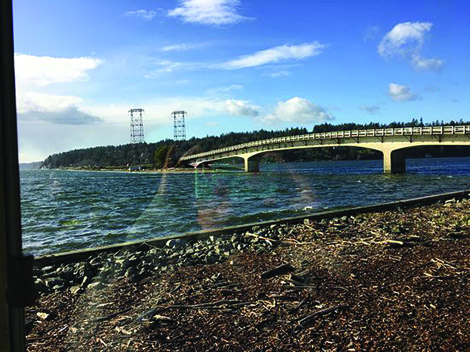Internet access has become a prerequisite for participating in modern life. Examples: Getting medical care, filing taxes, or paying rent can all require logging on. But the connectivity to make that happen isn’t equal for all. High-speed broadband access that’s taken for granted by city-dwellers often is out of reach in rural places.
To change that, the federal government has made tens of billions of dollars available nationally for telecom companies and local governments to help close the gaps. The Key Peninsula area in Pierce County received some good news in January when county officials and Comcast finalized an agreement to expand the availability of high-speed Internet for more than 526 homes and businesses.
Comcast will build the infrastructure for multi-gig broadband speed for residents and business customers. The approximately $5 million project is being funded as a public-private partnership between Comcast and the county, with $3.75 million of the funding funneled through the county in the form of federal money from the American Rescue Plan Act of 2021.
“Now more than ever, it’s crucial that people have access to high-speed Internet” for work, school and entertainment, said County Executive Bruce Dammeier.
Nationwide, the number of homes with no or slow Internet access isn’t clear, but Microsoft estimates as many as 120 million people — roughly one-third of the U.S. population – are behind the curve.
Key Peninsula is one of the places that’s catching up. Roy Novosel, a regional vice president of Comcast, said the upgrades on the way there are “an extension of our commitment to investing in and expanding our network to ensure that more residents and businesses have the important broadband connections they need.”
Once permits are obtained and construction has begun in public rights-of-way, Comcast will start giving peninsula-area residents information about the network buildup in their neighborhoods, including product and service details.
Meanwhile, broadband advocates see a rare chance to reshape the highly consolidated online landscape, thanks to a $42 billion program tucked into President Biden’s 2021 Infrastructure Law. Unlike previous federal subsidies, the most ambitious single deployment of federal resources to date will flow through state governments, which can prioritize open-access networks.
Even amid growing acknowledgement of the Internet as an essential utility, some advocates remain skeptical of whether passing money through states will overcome decades of fragmented policy and keep rural locales from slipping through the digital cracks.
Public utility districts (PUDs) emerged in Washington in the 1930s, when rural areas were grappling with how to provide electricity. At that time, rural communities lacked the legal authority to form public utilities, and it took a statewide ballot measure, passed in 1930, to pave the way for public electrical systems.
Internet service has followed a similar trajectory. Until a repeal in 2021, Washington was one of 20 states that banned or restricted public entities from providing Internet service. Most of those laws are still on the books, posing obstacles to federal efforts to expand access.
Amid the influx of federal stimulus dollars, many of Washington’s PUDs are jockeying for state infrastructure grants. In one such case in the state’s southwest area near Elma, a state board rejected a grant application due to an objection from Comcast, which argued it already served about a quarter of the homes in the proposed area. It was one of eight public broadband expansion plans scuttled by objections from private telecom companies, including Comcast and Nevada-based Rural Wireless LLC, in a process that state regulators have vowed to reform.
Washington has earmarked more than $400 million for broadband infrastructure grants, most of it federal aid from the American Rescue Plan. The most recent round of applications closed Jan. 17.
If past federal efforts to expand broadband access were plagued by a lack of oversight or accountability, local leaders in Washington hope this time will be different. State officials expect to pull in at least $900 million from the federal infrastructure bill this summer.
In Washington, only public and non-profit entities — ranging from PUDs and ports to cities and tribes — can apply for funding. But many are expected to form partnerships with private companies to serve customers.
One county is experimenting with a different, fully public model. Taking advantage of the 2021 law change, Jefferson County’s PUD is getting into the retail telecom business to offer service directly to consumers. The PUD won a $24 million grant last year to build fiber lines to 2,600 homes on the Olympic Peninsula.
Sources: Crosscut, a non-profit Pacific Northwest news site and part of Cascade Public Media, contributed to this report.
